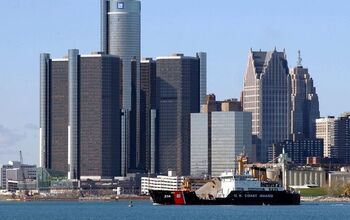Tata's Busy Week

Last week was an eventful one for Tata Motors. First, Daimler announced that it had completed selling off its 5.34% stake in the Indian automaker, for USD $422 million. Investors including Citibank and Tata Sons, the largest current Tata Motors stockholder, acquired the shares. Daimler explained the move by saying that it is now well enough established in India in terms of passenger and commercial vehicles, to no longer need an equity share in a local company. Daimler already builds CVs in Pune and its new CV plant in Chennai will go online in 2012. Daimler and Tata have a relationship that dates to 1954, when Tata started assembling Mercedes-Benz trucks. The two companies started local assembly of M-B cars in 1994 under the Telco joint venture.
Later, Tata Motors Group announced that global unit sales increased 59% in February 2010 over last February’s sales. TMG includes commercial vehicles made by Tata, Tata Daewoo and Hispano Carrocera, along with Tata, Jaguar and Land Rover passenger vehicles. Cumulative sales for the fiscal year were also up 17%. Commercial vehicles led the way with a 70% spurt. Total vehicles delivered were a hair shy of 90,000. All three passenger vehicle operations, Tata, Jaguar and Land Rover booked solid y-t-y increases over the bottomed out Feb. ’09 sales, 60%, 55%, and 62% respectively.
The Indian government, at a ceremony attended by Railway Minister Mamata Banerjee, inaugurated the opening of a number of rail hubs intended to serve the growing Indian auto industry. The first train to arrive at the automobile logistics center in Shalimar, Bengal was loaded with Tatas and Marutis, with Tata Nanos being the most numerous, followed by the Tata Ace micro CV. Ironically, most of those Nanos shipped to Bengal were originally going to be built there, but it was Mamata Banerjee, herself a Bengali politician, who organized displaced farmers to demonstrate against the almost completed Nano plant in Singur. Tata CEO Ratan Tata responded by moving the unit to Sanand in Gujarat state. That plant is not yet in production, so the Nanos arriving in Bengal were assembled at Tata’s Pantnagar factory in Uttarakhand.
Coming on the heels of all that good news, CRISIL, India’s leading credit rating agency, has raised Tata Motors’ short term debt rating to A+, primarily on the strength of cost reductions and new product introductions at Jaguar Land Rover. CRISIL stressed that JLR’s fortunes are critical to Tata Motors’ financial standing.
All good news must come to an end, though. Increases in commodity prices as the global economy starts to recover, along with more expensive tires and taxes, will mean that the world’s cheapest car, the Nano, will not be able to hold the 100,000 rupee mark much longer. In the past year, steel has gone up 25%, and increased demand for other metals like copper and aluminum as well as petroleum based plastics has driven costs up on virtually everything that goes into making a car. So far 26,000 Nanos have been delivered, and Tata says that it will guarantee the original $2,200 price for the first 100,000 customers.
How many buyers will opt for the stripper Nano is unclear, since right now the almost twice as expensive (172,360 – 185,375 rupees) Nano LX is selling better than the base Nano. When Tata starts taking more orders in Q4 2010, expect to see the LX go up to 200,000 rupees (USD $4,400) and the base car to be priced @ 130,000 Rs.

Ronnie Schreiber edits Cars In Depth, the original 3D car site.
More by Ronnie Schreiber
Latest Car Reviews
Read moreLatest Product Reviews
Read moreRecent Comments
- Jalop1991 does the odometer represent itself in an analog fashion? Will the numbers roll slowly and stop wherever, or do they just blink to the next number like any old boring modern car?
- MaintenanceCosts E34 535i may be, for my money, the most desirable BMW ever built. (It's either it or the E34 M5.) Skeptical of these mods but they might be worth undoing.
- Arthur Dailey What a load of cow patties from fat cat politicians, swilling at the trough of their rich backers. Business is all for `free markets` when it benefits them. But are very quick to hold their hands out for government tax credits, tax breaks or government contracts. And business executives are unwilling to limit their power over their workers. Business executives are trained to `divide and conquer` by pitting workers against each other for raises or promotions. As for the fat cat politicians what about legislating a living wage, so workers don't have to worry about holding down multiple jobs or begging for raises? And what about actually criminally charging those who hire people who are not legally illegible to work? Remember that it is business interests who regularly lobby for greater immigration. If you are a good and fair employer, your workers will never feel the need to speak to a union. And if you are not a good employer, then hopefully 'you get the union that you deserve'.
- 28-Cars-Later Finally, something possibly maybe worth buying.
- EBFlex The simple fact is very small and cheap ICE vehicles have a range thats longer than all EVs. That is the bar that needs met. And EVs cannot meet that.Of course range matters. But that's one element of many that make EVs completely ineffective at replacing ICE vehicles.































Comments
Join the conversation
The rail hub is really needed. Trucking is expensive in India, and the car-delivery trucks are enormous -- about the size of a US semi -- and I really don't know how they manage to make it down the road.